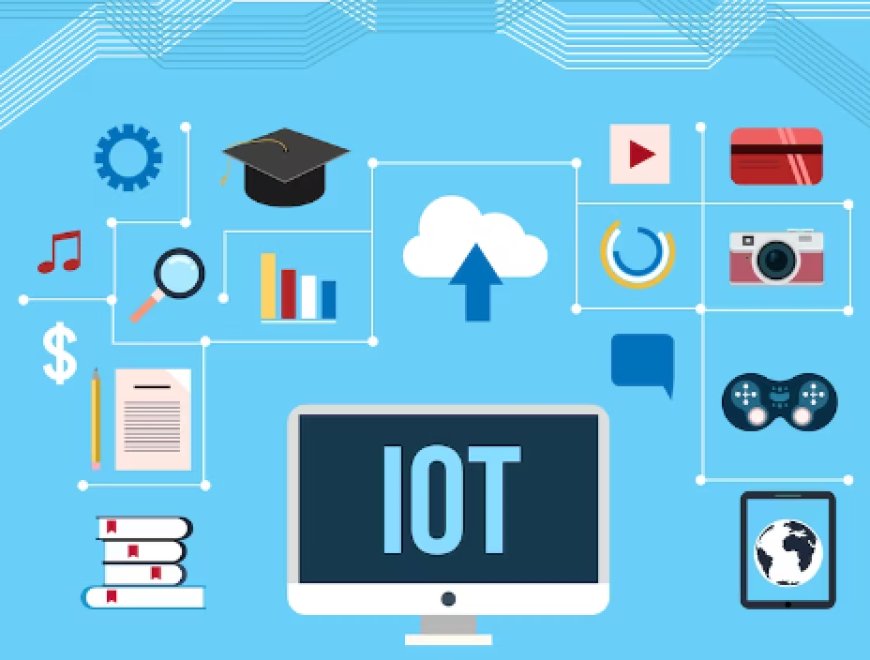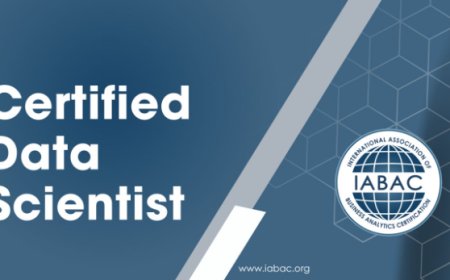The Intersection of Data Science and Internet of Things (IoT): Opportunities and Challenges
Explore the opportunities and challenges in leveraging data-driven insights to unlock the full potential of IoT devices and networks.

The rapid evolution of technology has led to the convergence of Data Science and the Internet of Things (IoT), creating an unprecedented potential for transforming industries and societies. Data Science involves extracting insights and knowledge from data, while IoT connects devices and sensors to the internet, enabling them to exchange information. This synergy holds immense promise, but it also presents significant challenges. In this blog, we explore the opportunities and obstacles at the intersection of Data Science and IoT.
Opportunities
Opportunities at the intersection of Data Science and IoT are vast and diverse. Let's delve into some of the key opportunities:
-
Data-Driven Decision Making: The integration of IoT devices and Data Science enables organizations to make data-driven decisions. Real-time data from IoT sensors, combined with advanced analytics and machine learning, empowers businesses to respond promptly to changing conditions and optimize operations.
-
Predictive Analytics: IoT devices continuously gather data on various parameters, such as temperature, humidity, and usage patterns. Data Science techniques can analyze historical data to build predictive models, offering insights into future trends and potential issues. This facilitates proactive decision-making and mitigates risks.
-
Personalization and Customization: IoT devices collect vast amounts of data about individual users' behaviors and preferences. Data Science helps businesses tailor products, services, and experiences to meet individual customer needs, leading to increased customer satisfaction and loyalty.
-
Process Optimization: The combination of IoT data and Data Science can identify inefficiencies in processes and supply chains. By optimizing these processes, organizations can reduce costs, improve productivity, and enhance overall efficiency.
-
Improved Healthcare: IoT devices in healthcare enable continuous monitoring of patients' vital signs and health conditions. Data Science enables early detection of health issues, personalized treatment plans, and remote patient monitoring, improving healthcare outcomes and reducing hospitalization rates.
-
Environmental Monitoring and Sustainability: IoT sensors can monitor environmental parameters like air quality, water levels, and energy consumption. Data Science can analyze this data to identify patterns and trends, aiding in better resource management and sustainable practices.
-
Smart Energy Management: IoT-connected devices, such as smart meters and energy sensors, provide real-time data on energy consumption. Data Science helps optimize energy distribution and consumption patterns, leading to more efficient and eco-friendly energy usage.
-
Autonomous Systems and Robotics: The combination of Data Science and IoT is vital for the development of autonomous systems and robotics. Sensors collect data, and algorithms process it to enable autonomous decision-making and actions in various industries, including manufacturing, agriculture, and transportation.
The convergence of Data Science and IoT offers a plethora of opportunities across various sectors. From enhancing data-driven decision-making to enabling personalized experiences and sustainable practices, the combination of these technologies holds the potential to revolutionize industries and improve the quality of life for individuals. Embracing these opportunities with a focus on ethical and secure data usage will pave the way for a more connected, intelligent, and sustainable future.
Challenges
The intersection of Data Science and IoT presents immense opportunities for transformative innovation, but it also comes with its fair share of challenges. One of the primary challenges is ensuring data security and privacy. With the massive volume of data generated by IoT devices, there is a heightened risk of cyberattacks and breaches, necessitating robust encryption and privacy-preserving techniques. Additionally, the integration of diverse and unstructured data from IoT devices poses data integration and interoperability challenges, requiring efficient data cleansing and standardization processes.
Scalability is another pressing issue, as the proliferation of IoT devices can overwhelm existing data infrastructure and analytics capabilities. Developing scalable Data Science solutions becomes crucial to accommodate the increasing data flow without compromising performance. Moreover, ethical considerations surrounding data ownership, consent, and the potential for unintended consequences demand careful attention to ensure responsible data usage.
Regulatory frameworks must also keep pace with the rapidly evolving technology, establishing guidelines that balance innovation with data protection. As IoT and Data Science continue to evolve together, collaboration between experts from both domains becomes crucial to address these challenges effectively. By embracing these obstacles as opportunities for improvement and adopting a collaborative and ethical approach, we can fully realize the potential of this transformative convergence for a smarter and more connected future.
Collaboration and Education
To fully exploit the potential of the Data Science-IoT convergence, collaboration between professionals from both domains is essential. Data scientists, with their expertise in data analysis, machine learning, and statistics, can team up with IoT specialists who understand the complexities of sensor networks, communication protocols, and device management. By combining their skills, they can develop innovative solutions that address real-world challenges and drive technological advancements.
Moreover, educational institutions and training programs need to adapt to this evolving landscape. They must design interdisciplinary courses that blend Data Science and IoT concepts, equipping the next generation of professionals with a comprehensive skill set. Encouraging cross-disciplinary research and offering specialized degrees in Data Science for IoT or vice versa can also foster a workforce well-versed in both areas.
Addressing Security and Privacy
As the integration of IoT and Data Science grows, so does the need to prioritize security and privacy. The sensitivity and volume of data collected by IoT devices make them attractive targets for cyberattacks. Data Science techniques can be instrumental in detecting anomalies and potential security breaches. Employing advanced machine learning algorithms to detect suspicious patterns in data transmissions can help ensure early threat detection and mitigation.
Data anonymization and encryption are other critical aspects to protect user data and privacy. Data Science practitioners must work hand-in-hand with security experts to implement robust encryption methods and privacy-preserving techniques while still allowing useful data analysis.
Regulatory Frameworks
The fast-paced development of IoT and Data Science technologies has sometimes outpaced regulatory frameworks. Policymakers must work proactively to establish guidelines and standards that safeguard consumers' privacy and ensure ethical use of data. By involving experts from both fields, regulatory bodies can create well-informed policies that strike a balance between innovation and protection.
- Data Protection and Privacy Regulations: Ensuring compliance with data privacy laws and regulations, such as GDPR, CCPA, or HIPAA, when collecting, storing, and processing data from IoT devices.
- Cybersecurity Standards: Implementing robust cybersecurity measures to safeguard IoT devices and networks from potential cyber threats and data breaches.
- Interoperability Standards: Adhering to established interoperability standards to ensure seamless communication and data exchange among various IoT devices and platforms.
- Ethical Considerations: Addressing ethical concerns related to data collection, usage, and potential biases in IoT-driven data science applications.
- Data Ownership and Consent: Defining clear guidelines for data ownership and obtaining explicit consent from users for collecting and using their data.
- Transparency and Explainability: Ensuring transparency and providing explanations of data science algorithms and models used in IoT applications to build user trust.
- Regulatory Sandboxes: Exploring the use of regulatory sandboxes to test and develop innovative IoT solutions while complying with relevant regulations.
- Data Retention and Deletion: Establishing policies for data retention and deletion to manage data lifecycle in compliance with regulatory requirements.
- Intellectual Property Rights: Addressing intellectual property concerns, particularly in cases where data insights and innovations are generated through IoT and data science collaborations.
- Cross-Border Data Transfer: Complying with regulations related to cross-border data transfers when dealing with IoT data that may flow across different jurisdictions.
- Quality Assurance and Accountability: Implementing quality assurance measures and establishing accountability frameworks to ensure the reliability and accuracy of data science processes in IoT applications.
Real-World Implementations
The convergence of Data Science and IoT has already found applications in various industries. Let's explore some real-world implementations:
-
Smart Manufacturing: In the manufacturing sector, IoT devices are used to monitor machines, track production metrics, and collect data on various process parameters. Data Science techniques are then applied to analyze this data to optimize production efficiency, reduce downtime, and improve overall quality.
-
Precision Agriculture: IoT sensors deployed in farmlands can monitor soil moisture, temperature, and other environmental factors. Data Science algorithms analyze this data to offer precise irrigation schedules, optimized fertilizer use, and early pest detection, leading to increased crop yields and sustainable farming practices.
-
Healthcare Monitoring: Wearable IoT devices can continuously collect vital health data from patients. Data Science applications help in early diagnosis, monitoring chronic conditions, and predicting potential health risks, empowering patients and healthcare providers alike.
-
Smart Energy Management: IoT-enabled smart meters and energy sensors gather real-time energy consumption data. Data Science is utilized to analyze patterns and suggest energy-efficient strategies for households and businesses, contributing to energy conservation efforts.
-
Transportation and Logistics: IoT sensors on vehicles, roadways, and shipping containers provide real-time data on traffic, vehicle condition, and cargo status. Data Science helps optimize transportation routes, improve logistics efficiency, and reduce fuel consumption and emissions.
The fusion of Data Science and IoT opens up an exciting world of possibilities, enabling data-driven decision-making, process optimization, and improved quality of life. As industries continue to adopt these technologies, they must also address the challenges to ensure data security, scalability, and ethical usage. Collaboration between experts in Data Science and IoT will be vital to navigate this evolving landscape and unlock the full potential of this transformative intersection. By embracing these opportunities and addressing the challenges, we can harness the power of data and connected devices to create a smarter and more sustainable future for all.











































